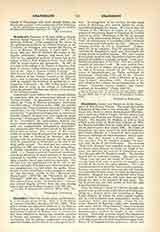

Grand Rapids, Diocese of (Grandormensis), created May 12, 1882, out of the Diocese of Detroit, and made to include the lower peninsula of the State of Michigan, U.S.A., north of the southern line of the Counties of Ottawa, Montcalm, Gratiot, and Saginaw, and west of the eastern line of the Counties of Saginaw, Bay, and the adjacent islands, an area of 22,561 square miles. In this section there were then about 50,000 Catholics attended by 34 priests. There were 33 churches, 33 missions, 41 stations, 11 parish schools, and an orphan asylum. In the rural regions colonies of Belgians and emigrants from Holland had settled, with an admixture of Irish; to these Poles have since been added. Henry Joseph Richter, appointed the first bishop, was consecrated at Grand Rapids, April 22, 1883. He was born at Neuenkirchen, Duchy of Oldenburg, Germany, April 9, 1838, and ordained priest at Rome, June 10, 1865. Under his direction the diocese prospered steadily in all directions. Several religious communities of men are located there: Franciscans (both Minorites and Conventuals), Fathers of the Holy Ghost, Redemptorists, and Premonstratensians. The religious communities of women are: Sisters of St. Dominic, Sisters of Mercy, Little Sisters of the Poor, Sisters of Charity (Mt. St. Joseph, Ohio), School Sisters of Notre Dame, Ursuline Sisters, Sisters of Charity (Emmitsburg), Sisters of Providence, Felician Sisters, Sisters of the Good Shepherd, Sisters of the Immaculate Heart of Mary, Franciscan Sisters of Christian Charity.
Statistics: Priests 133 (regulars 24); ecclesiastical students 60; churches with resident priests 91; missions with churches 92; stations 38; chapels 18; academies for girls 2; high schools 2, pupils 242; parish schools 66, pupils 13,545; orphan asylums 2, inmates 325; industrial schools 1, pupils 138; total young people under Catholic care 14,108; hospitals 7; home for aged poor 1, Catholic population 126,057.
THOMAS F. MEEHAN

